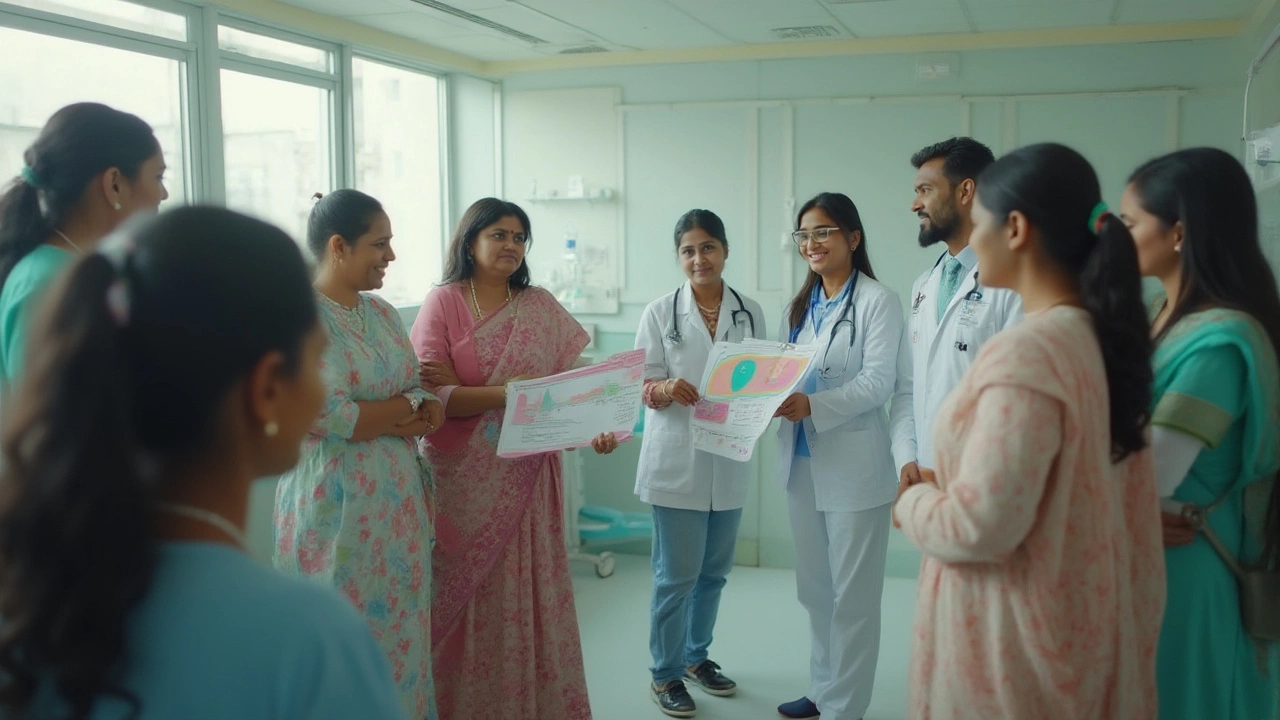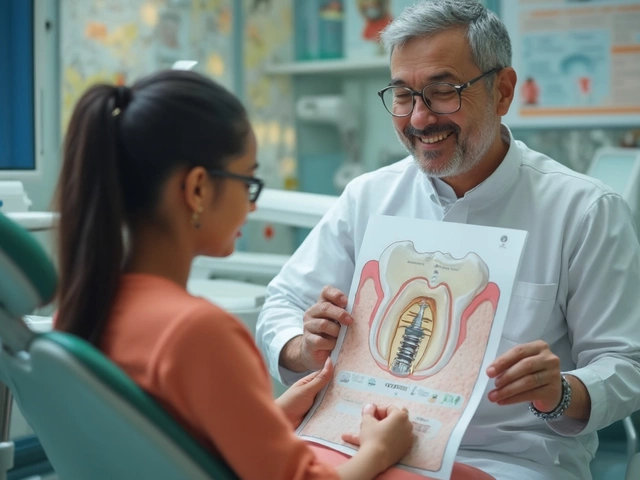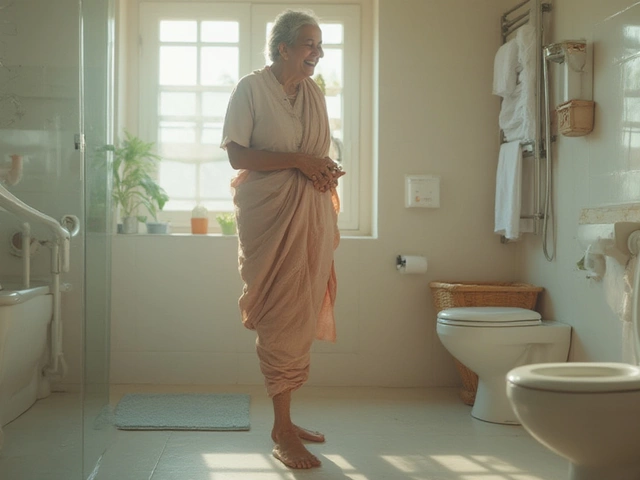Ask almost anyone what their biggest health fear is, and cancer sits at the top of the list. But here's something many people don't realize—the word "cancer" lumps together hundreds of diseases. Some cancers can be aggressive and stubborn, but others, when caught early, are surprisingly beatable. The survival odds depend on the type of cancer, the stage when it’s found, and how fast you start treatment. Let’s pull back the curtain on which cancers are most treatable, what makes them easier to survive, and why knowing the facts might take away a bit of that deep, dark fear.
The Cancer with the Highest Survival Rates
If you want a straight answer, thyroid cancer wins the title of easiest to survive—especially the common kind called papillary thyroid cancer. According to the American Cancer Society, the five-year survival rate for all thyroid cancers combined hovers around 98%. For papillary thyroid cancer alone, it’s closer to 99%. That means out of 100 people diagnosed, 99 are still alive five years later. Pretty uplifting for a diagnosis that sounds terrifying at first. Other cancers with high survival rates include testicular cancer (with a five-year survival rate above 95%, thanks to its tendency to grow slowly and respond well to treatment) and early-stage prostate cancer (nearly 100%). Melanoma—when caught before it spreads—has a five-year survival rate over 99% as well.
Why is thyroid cancer so treatable? It usually grows slowly, it’s often caught early (as a painless lump or through routine checks), and surgery plus thyroid hormone treatment works really well. Most people keep right on living their usual lives after treatment, with manageable medication. Here’s a quick look at five-year survival rates for some common cancers, straight from recent hospital data:
| Cancer Type | Five-Year Survival Rate (%) |
|---|---|
| Thyroid (Papillary) | 99 |
| Testicular | 96 |
| Prostate (Local/Regional) | 99 |
| Melanoma (Early) | 99 |
| Breast (Stage 1) | 99 |
| Colorectal (Stage 1) | 92 |
| Lung (Stage 1) | 68 |
Those numbers might surprise you, especially if you’ve only heard the horror stories. Not all cancers act the same, and survival rates actually prove hope is more common than we think once you have early detection on your side.
Why Early Detection Changes the Game
Ever wonder why doctors pester you about regular checkups and cancer screening? Catching cancer early really does save lives. Small, localized tumors (means the cancer is still in its original spot) are usually easier to remove, and treatments like surgery, radiation, or medicine are much more effective.
Take breast cancer as an example. Women screened regularly with mammograms and self-breast exams are more likely to find the disease before it spreads. For women whose breast cancer is localized at diagnosis (still in the breast), the five-year survival rate is over 99%. But if it’s found late, when it’s spread to distant organs, those odds drop fast—down to about 30%. Same general rule for colorectal cancer, prostate, and even melanoma.
Here’s what most people don’t realize: a lot of early-stage cancers barely make a blip in your day-to-day life and don’t cause big symptoms. That’s why screenings matter. It also pays to know basic warning signs—like unexplained lumps, unusual bleeding, changes in your skin, or a stubborn cough that won’t quit. Don’t skip the annual physical, and absolutely don’t ignore any changes you notice, no matter how tiny they seem.
If there’s cancer in your family, or if you’ve inherited certain high-risk genes (like BRCA1 or BRCA2 for breast and ovarian cancer), your doctor may recommend starting screening earlier or doing genetic testing. Early detection really is your secret weapon.

Treatments That Deliver the Best Results
Cancer treatment has changed a lot over the last few decades. Surgery is still the gold standard for cancers that stay local—think thyroid, testicular, early prostate, and many breast cancers. Removing the tumor before it spreads is usually a cure or very close to it. But even for cancers found slightly later, the arsenal of treatment options keeps getting stronger and more precise.
For example, thyroid cancer treatment almost always starts with surgery to remove all or part of the thyroid gland. After that, you might take radioactive iodine to wipe out any leftover cancer cells, followed by daily thyroid hormone pills. It sounds complicated, but for the average person, side effects are mild and life goes on. Testicular cancer is also treated first with surgery, often followed by chemo or radiation for higher-stage cases. Oncologists know how to adjust treatments to keep survival high while reducing side effects.
Modern radiation therapy is much more focused, which means healthy tissue is less likely to be collateral damage. As for medicines, targeted therapies and immunotherapies are game-changers, especially for cancers that don’t respond well to older drugs. Scientists can now zero in on what makes a specific tumor tick, then attack it directly, often sparing the rest of the body.
- Surgery is most effective when tumors haven’t spread.
- Radiation and chemo help when cancer is more advanced or when small bits might be left behind after surgery.
- Hormone therapies are common for certain breast and prostate cancers, slowing or stopping cancer growth.
- Targeted therapies and immunotherapies are now options for more types of cancer, ramping up cure rates even for some late-stage cases.
No one pretends cancer treatment is a walk in the park. But the old idea that it’s always miserable or has to ruin your life just isn’t true for most of the cancers with high survival rates. Talk to any long-term survivor and they’ll tell you it was tough, but they’re more than okay now.
What Factors Help You Beat Cancer?
Ever met someone who bounced back from cancer and looked healthier than before? A lot more goes into surviving cancer than just picking the right doctor or drug. Your age, health at diagnosis, and even attitude make a difference. But there are some concrete reasons why survival is high for certain cancers.
- Slower-growing tumors give you more time to catch and treat the cancer early. That’s why thyroid and prostate cancers often come with good news.
- If the location is somewhere easily accessible (like the testicles or skin), detection is quicker. Visual or physical exams can spot lumps or changes before the cancer gets a head start.
- Screening programs for breast, colon, cervical, and skin cancers work. Regular checkups and simple tests save lives every year by finding issues before symptoms get scary.
- Some cancers, like thyroid, respond like clockwork to treatments. Surgeons joke that papillary thyroid cancer is a "friendly tumor" because it usually behaves so predictably.
- Genetics can be both friend and foe. For many high-survival cancers, even a strong family history doesn’t automatically mean worse odds if you catch it early and stay on top of screenings.
- Lifestyle choices after treatment—eating well, staying active, avoiding tobacco, and limiting alcohol—all matter for preventing recurrence and bouncing back to normal life.
Attitude isn’t everything, but positive, proactive patients often do better. Support networks matter, too. People who have family, friends, or even cancer survivor groups cheering them on tend to stay on top of follow-up care, report symptoms early, and bounce back emotionally.

Tips to Lower Your Cancer Risk and Boost Survival Chances
No one can guarantee you’ll never hear the word "cancer" in your doctor’s office. But the best odds come from early action and common-sense prevention. Here’s what works, backed by real research and lived experience:
- Don’t skip routine tests—mammograms, skin checks, colonoscopies, and prostate evaluations have a real impact on survival rates.
- Do monthly self-exams (think breasts, testicles, and skin). Know what "normal" feels like for your own body.
- Slather on sunscreen and cover up. Skin cancer, including deadly melanoma, is way easier to prevent than treat.
- Eat plenty of fruits and leafy veggies. Fiber, antioxidants, and plant-based foods lower your chance of several cancers.
- Limit alcohol and avoid tobacco—each one is a proven cancer risk factor that’s 100% under your control.
- Keep an eye on family history. If close relatives had cancer, especially at a young age, ask your doctor about earlier screenings or genetic testing.
- Stay active. Just 30 minutes a day of brisk walking or anything that gets your heart moving strengthens your body’s defenses.
The final truth? The "easiest" cancer to survive is the one you never let get out of hand—the one you catch before it turns mean. Thanks to modern medicine, some cancers, like papillary thyroid and testicular cancer, are almost always highly curable, especially if you don’t ignore warning signs or delay seeing your doctor. If your health worry has been quietly haunting you, don’t wait. The odds are better than ever that you can come out stronger on the other side.





